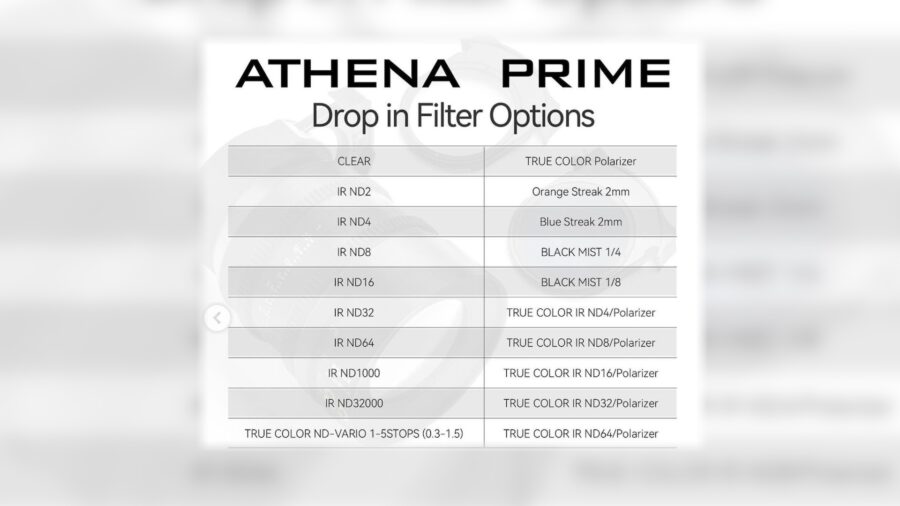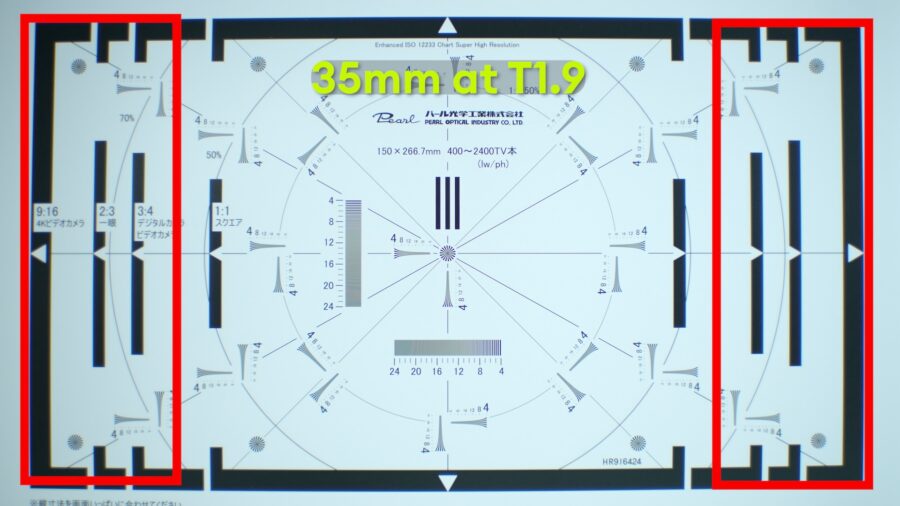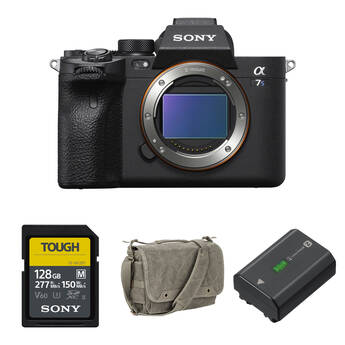NiSi ATHENA Review – Small Full-Frame Prime Lenses On A Budget
Restriction-free music courtesy of Epidemic Sound. Sign up here: Epidemic
When the NiSi ATHENA lenses landed on my table, I was eager to put them through their paces for my review. After all, these small full-frame primes are promising a lot for the price. With lots of “unified specifications” across the lens line, like gear positions, weight, large aperture of T1.9 (but the 14mm lens), and even color rendering, could these become the lenses you have been waiting for? Let’s take a closer look.
Simply put, in the beginning, there was a camera, and then lenses were created… Sounds logical, doesn’t it? One can say, essentially, this is all you need for creating your next blockbuster. Everything else can be considered as an “extra” or a “bonus” if you like. Looking at the current market situation, it seems many manufacturers have realized this, otherwise, I have no other explanation as to why so many companies have started to produce lenses. So now the market is booming with a bunch of offerings. Some are more interesting than others, but in the end, this kind of competition works best for us, the independent filmmakers, who are looking for good lens quality and value for money.

NiSi ATHENA Lenses
Earlier this year during NAB 2023, NiSi exposed their ATHENA line of lenses. And now, those lenses have finally hit the market and are being sold as a set of five, or, you can purchase the 14mm, 25mm, 35mm, 50mm, and 85mm separately. When it comes to mounts, there is a variety to choose from. For mirrorless cameras, NiSi is currently offering native Canon RF, LEICA/Panasonic/SIGMA L, Sony E, and FUJIFILM G mount options. In addition, the ATHENA lenses can be ordered to arrive with a PL mount. It is worth mentioning that the PL mount version has no drop-in filter option. So does the FUJIFILM G lenses, while the Sony E mount comes in two flavors, with or without a “drop-in filter” option. More about those “drop-in filters”, is down below.
In this review, I paired the NiSi Athena lenses with the Sony a7S III and tested what it’s like working with them while filming a mini-documentary. By the way, in case you are interested, my main “working horse” for that video was the 25mm lens. It proved to be the focal length that suited my type of work during that day best. When it comes to the Sony a7S III, I still love working with it, but I couldn’t help but notice that certain “signs of aging” are becoming a bit noticeable… Maybe the feature that I was missing most was the ability to record externally via USB-C in a “ProRes-like quality” codec.

As I previously mentioned, the ATHENA lenses will come in a variety of mounts, and while it is very easy to adapt the PL version to attach it to different mirrorless cameras, most of the ATHENA native mirrorless mounts have the advantage of having a drop-in filter feature. As far as I’m concerned, this is a welcomed solution that can help with reducing the overall camera setup size, especially when running and gunning.

Drop-in Filters
At the time of making this review, no drop-in filters were available, but lots of different filter options are supposed to hit the market in early 2024.
Talking about these filters, I checked with NiSi if only the filter glass element itself can be sold or if it will always include the metal tray, and the answer was, “only with the metal tray”. I hope that NiSi will consider selling the filter glass element on its own, as it can maybe reduce the overall product price or even support the environment a bit.

Now, please allow me to highlight some of the advantages of these new lenses, and I would like to start with their compactness. One has to love the compact form factor. They are nice to hold and simply feel robust. In addition, NiSi managed to pretty much control the weight of these lenses and nail it to around 890 grams (but the 14mm) for the Sony E mount version with drop-in filter, so if you are working with a gimble for example, changing focal lengths should be straightforward.

All lenses in this family are marked at a maximum T1.9 aperture, except for the 14mm which is T2.4. Having such fast lenses surely helps with achieving beautiful bokeh but please take into consideration that when working wide open at T1.9, the image tends to be a bit soft on the sides. Closing the aperture to T2.8 makes things better, but for sharper images across the frame, T4.0 is your safer bet.
It’s also very nice to see that focus breathing is extremely well controlled next to minimalistic chromatic aberration.


One spec that I like to mention with these lenses is the image circle size. Having a 46mm Image circle means that the lenses can cover full-frame sensors and beyond. For example, you can mount the PL, or G lens versions on the FUJIFILM GFX large format camera, and depending on the resolution you choose, you might have minimal vignetting on the height of the image but not the width.
What else: Lens gears are all lined up in the same position, markings are clearly visible on both sides, and we also have high visibility paint which is not glowing in the dark, yet still, very useful in different set conditions.

Lens consistency continues with the front diameter which is 80mm and the inner filter thread for attaching traditional filters like a vari-ND is 77mm. In any case, these diameter measurements help with keeping the overall compactness of the lenses.
If you opt to buy the five-piece lens set, you might consider getting the practical carrying case that can easily accommodate all lenses and even leaves some space for a future lens.
When it comes to lens distortion, some focal lengths are doing better than others, but distortion is certainly there. Yet, it might not be distracting when working in the field…

Things to consider and improve
When it comes to improvement, there are two points I would like to touch. One is the number of lenses currently offered. Of course, you have to start “somewhere”, but additional focal lengths will be a welcomed addition. NiSi already hinted at working on a 135mm lens, and I guess that this is the reason for having one additional space in the hardshell case.
The other thing I wanted to highlight is the built quality of those lenses. In general, I really like what I see, but, one of the two demo 25mm lenses gave me the hardest time when it comes to mechanical and optical reliability. I had some issues with the lens focus ring (Stiff focus at some point) and drop-in filter tray not locking well, next to having a single spot in the lens itself which caused some unwanted reflections. Luckily, I had no similar issues with the rest of the lenses in the kit. (NiSi assured me that those are isolated issues with those specific demo lenses).

Final thoughts
Throughout 2023 we have tested a good deal of lenses. Most had some kind of “vintage look” built into them. Now, while some will say that the “vintage look” is an excuse to produce optically inferior lenses, let’s give the respected manufacturers the benefit of the doubt. In this regard, NiSi chose the opposite way by introducing good clean, natural-looking optically wise lenses. Let me put it differently, the optical performance of those lenses is consistent, almost clinical, which in many ways is a good starting point as you can alter the look by yourself with some good frontal anamorphic adapters or different filtersation for example.
One thing that I’m reluctant to talk about is what NiSi calls “Micro Contrast Control“. I don’t want to talk about a subject that I only have limited knowledge of, so I’ll just say that according to NiSi, you get more life-like images with these lenses. One way to observe this is by turning your image to black and white and seeing the greater graduation with a large number of grey shades. For the sake of simplicity, may I dare say that this resembles an 8-bit vs. 10-bit picture coming out of a camera? (Like a “10-bit lens”)… :)
So all in all, for indie filmmakers, this set of lenses represents a great balance between optical performance and price!

Acknowledgment: Many thanks to Naoyuki-san who opened the doors of his Italian restaurant Cadota for my visit and allowed me to be with him for a few hours. Higashi-Nagasaki neighborhood in Tokyo is a beautiful quiet place and I truly recommend this restaurant to anyone who loves french fries. And many thanks to Jay Choma who helped with editing this lovely piece! Color grading made with CineD/fylm.ai LUT builder. Try it here.
What do you think of this NiSi ATHENA set of lenses? Do you have experience working with them? If you haven’t already, will you consider getting them? Please share your thoughts in the comment section below.






























